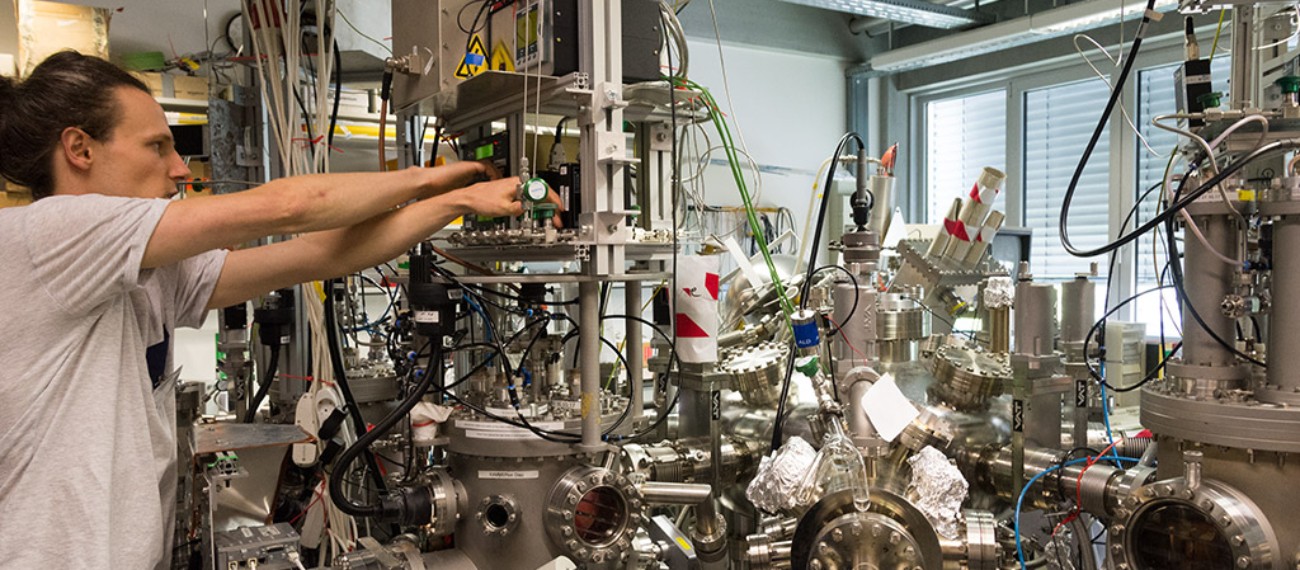Our current emphasis is on electronically and ionically conducting and on dielectric post transition-metal and transition-metal oxides, with applications in solar cells, displays, fuel cells and capacitors. The aim is to understand the energetics of charge transfer processes, which determine conductivity and surface reactions and which influence dielectric behaviour. We approach this by evaluating the influence of the Fermi energy in the respective materials targeting towards manipulating material properties by Fermi Level Engineering.
The bulk Fermi energy is determined by intrinsic defects, impurities and doping. On the other hand, defect concentrations and charge states are determined by the Fermi energy. We analyse the corresponding properties using photoelectron spectroscopy with in-situ sample preparation as well as with conductivity and Hall-effect relaxation measurements. Manipulation of the Fermi energy is obtained by oxidizing and reducing treatments and by interface formation with high and low work function materials.
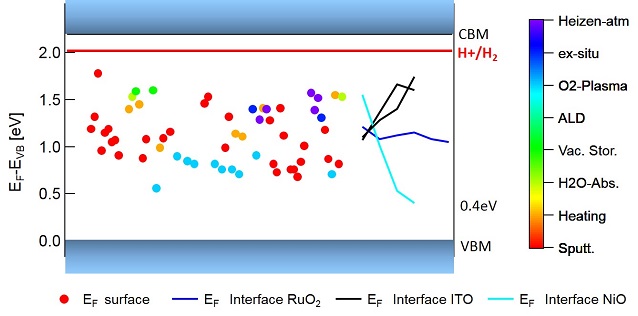
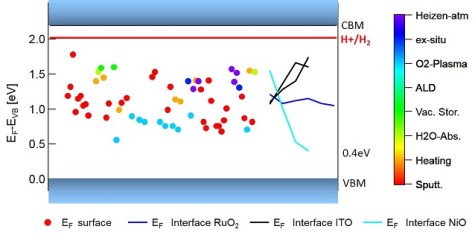
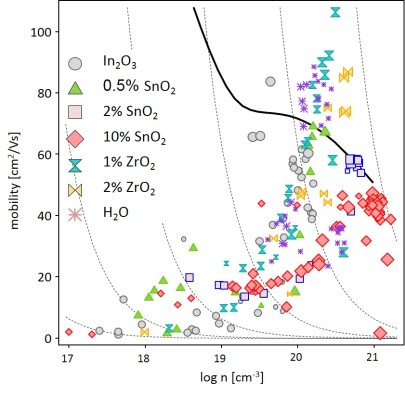
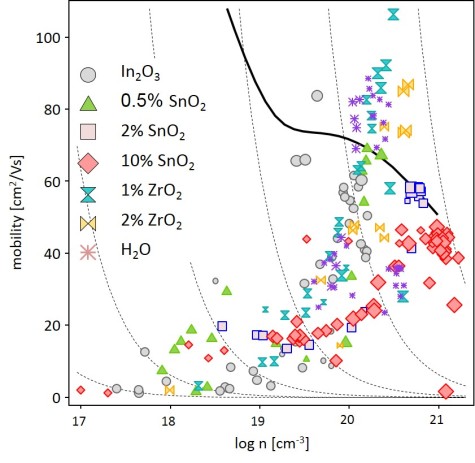
The chemical and electronic properties of interfaces are probed using interface experiments, in which a contact material is deposited in several small steps with intermediate XPS analysis. The experiments provide the energy band alignment and Schottky barrier heights. In-situ analysis provides a convenient opportunity to study the dependence of barrier heights on preparation conditions. The related variation of the Fermi energy is affected by defect properties, allowing to identify defect energy levels.
Grain boundaries affect electrical properties by introducing space charge potentials. These can be probed using electrical measurements by determining the activation energy of charge transport. Hall-effect measurements can be applied if samples are sufficiently conducting.

